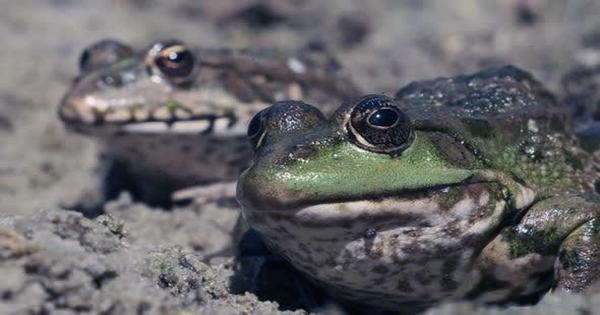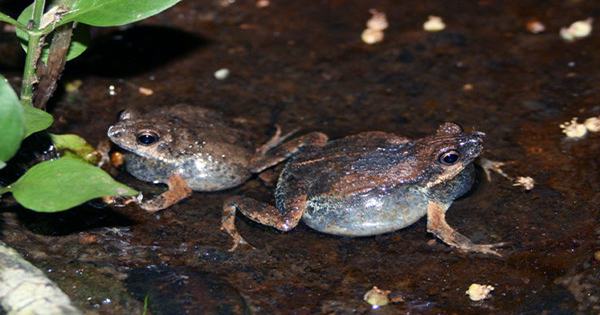When it comes to pheromones, love may literally be in the air, but certain species take matters into their own hands – or mouths – to ensure the chemical message reaches its intended recipient. Direct sex pheromone transmission, as it is affectionately known, well-documented in invertebrates, but it is a less prevalent method in vertebrates – that is until pouty frogs arrived on the scene.
Frog species from the Plectrohyla genus adopt a more direct approach, according to a new study published in the journal Frontiers in Zoology. It turns out that males of these animals engage in “traumatic mating” to boost their chances of reproducing by scratching their love scent into females with specialized teeth. They believe chivalry is extinct.
It turns out that traumatic mating amongst amphibians is not rare. Lisa M Schulte, the paper’s primary author, told IFLScience, “Traumatic mating may be found in many animal species.” “During amplexus, several frog species puncture the females with spines on their thumbs. This is most likely also used for pheromone transmission.”
When frogs and toads mate, they adopt the amplexus sex posture, in which the male clasps the female from behind. The researchers wanted to see if male Plectrohyla frogs’ enlarged fangs and swollen lips were also employed to convey pheromones during traumatic mating.

To discover out, they consulted specialists in the field: frog-mating couples. Observing the animals indicated that during amplexus, the males used their bodacious lips to press into the women’s backs. The frogs’ unique teeth caused minor scratches because of the motion.
The frogs’ plump pouts included specialized mucus glands that appeared similar to those known to release pheromones in amphibians, according to samples. Whole-transcriptome sequencing revealed sodefrin precursor-like factor proteins, a known amphibian pheromone, confirming their role.
However, pheromones are responsible for a wide range of actions (including locust swarming), and there is now inadequate information to determine what these “love bites” accomplish in frogs. According to Schulte, it is feasible that they may shorten a female’s egg-laying period, but what sets this study apart is the species’ unique strategy.
“We’ve already discovered that various frog species have glands that carry potential pheromones,” Schulte added. “However, it appears that all of these species transmit these chemicals through the female’s nose.” The most surprising finding of this study is that pheromones appear to be delivered via a different mechanism [via skin].” The next step for the researchers is to learn more about how male pheromones affect female frogs and toads during breeding.















